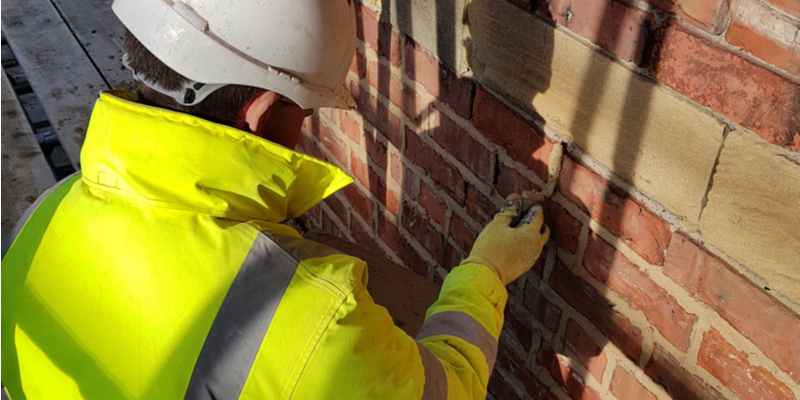Tuckpointing in Toronto should be done whenever the mortar joints that hold your bricks together begin to crack, crumble or fall out. Formally known as re-pointing, tuckpointing takes degrading mortar joints and restores them to their original strength.
If you ignore cracked or damaged mortar, the damages will only get worse. That’s because weakened mortar allows water and other damaging elements to get inside, further increasing mortar destruction and eventually degrading brickwork.
Tuckpointing, or repointing, involves removing damaged sections of mortar and cleaning it out to a certain depth. From there, the existing mortar is matched with a replacement mortar that replicates it in color, texture and strength. This mortar is used to fill in the removed sections. The proper grooves are created to form a uniform appearance. Lastly, a layer of sealant is applied to protect mortar from future moisture damage.
Tuckpointing Toronto: How Often Does It Need to Happen?
There’s no one-size-fits-all answer for tuckpointing in Toronto. Instead, it all depends on the level of damage facing your mortar, as well as the elements it is exposed to on a regular basis. It also matters how well the structure was constructed in the first place.
In Toronto, we have cold weather and high winds, as well as a risk for flooding. All of these things put extra pressure on mortar and may mean that tuckpointing is necessary more often than in other regions.
Instead of following a prescribed timeline, it’s better to know what warning signs indicate that mortar is breaking down and requires repairs.
Signs That Indicate the Need for Toronto Tuckpointing
We recommend doing a thorough investigation of brickwork in the springtime. This is the best time of year for a visual inspection.
- Check for joints that are dark or shadowed, this indicates a buildup of excess moisture, and moisture is the biggest contributor to brick and mortar damage.
- Look out for a powdery lime mortar that crumbles when you touch it or probe at it with a key, pocket knife, or anything of the sort. Some mortar is so badly ruined that it will crumble beneath your fingertips.
- Make sure there aren’t any areas where mortar is missing
Do You Have to Fix the Entire Structure or Just the Damaged Areas?
We get this question a lot, and for good reason. It’s a lot more cost effective to fix one area of a wall or building, as opposed to fixing the entire structure. In many cases, damages are reserved to one area or multiple portions of the building. In which case, the problem(s) can be addressed on an as-needed basis.
“Spot tuckpointing” is the act of filling in holes with new mortar in areas where damage is most prominent. This is considered a reasonable repair that is fast and affordable. Still, this is more of a band-aid approach and a building may require more extensive repairs to make it worth your while.
Tuckpointing Historic Homes in Toronto
Historic homes are especially vulnerable to mortar and brick damage and require extra special care when it comes to repointing. It is often more difficult to determine the appropriate replacement mortar to use for a historic building. Thankfully, there are ways to uncover the perfect mix, such as testing the existing mortar to identify makeup and content.
Using the wrong type of mortar to repair a historic home can cause more harm than good. That’s why you must rely on trusted experts who are experienced at tuckpointing historic properties.
At Turnbull Masonry, we offer quality tuckpointing services to restore chimneys, retaining walls, walkways, and so forth. Plus, we specialize in historic properties. Learn more

